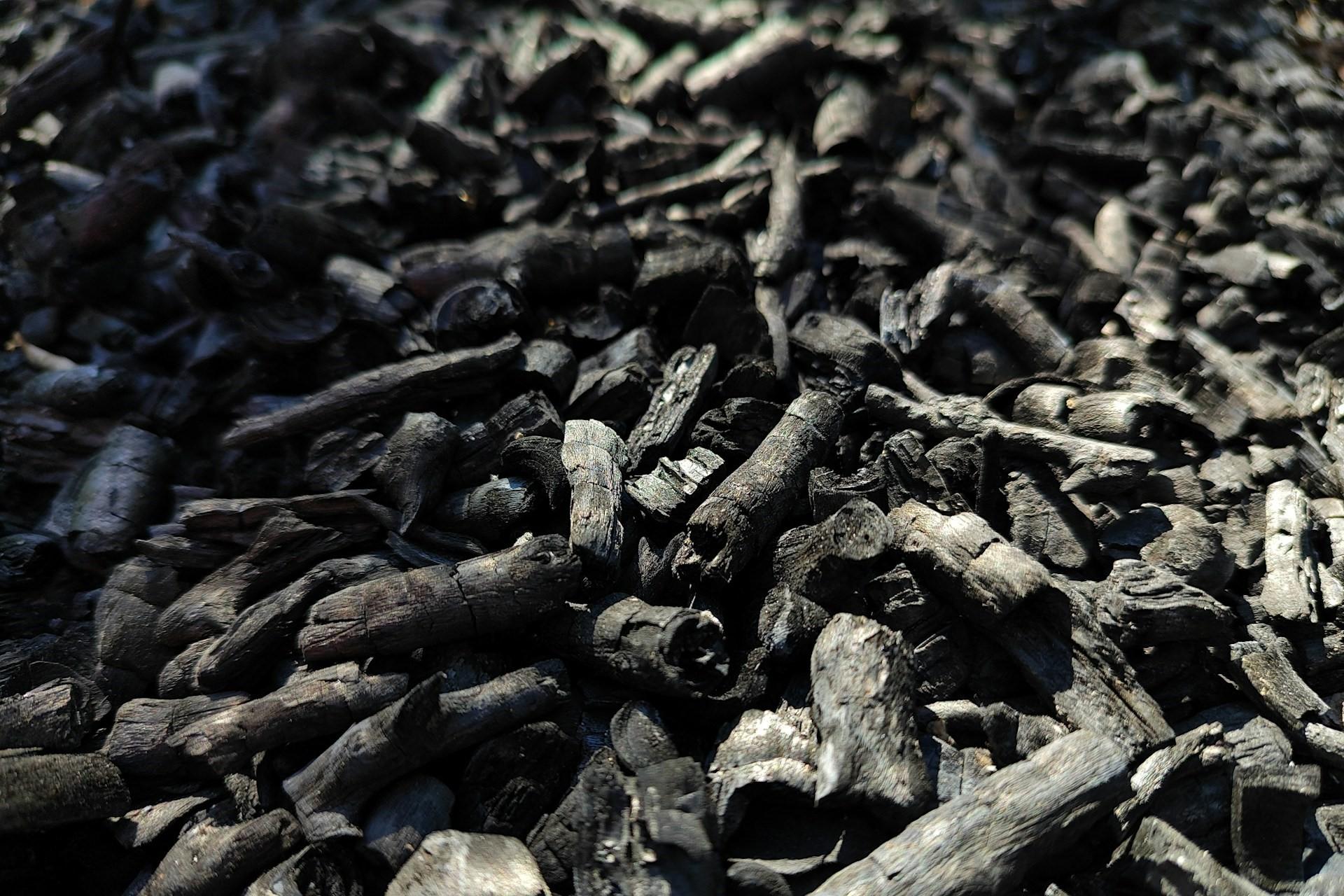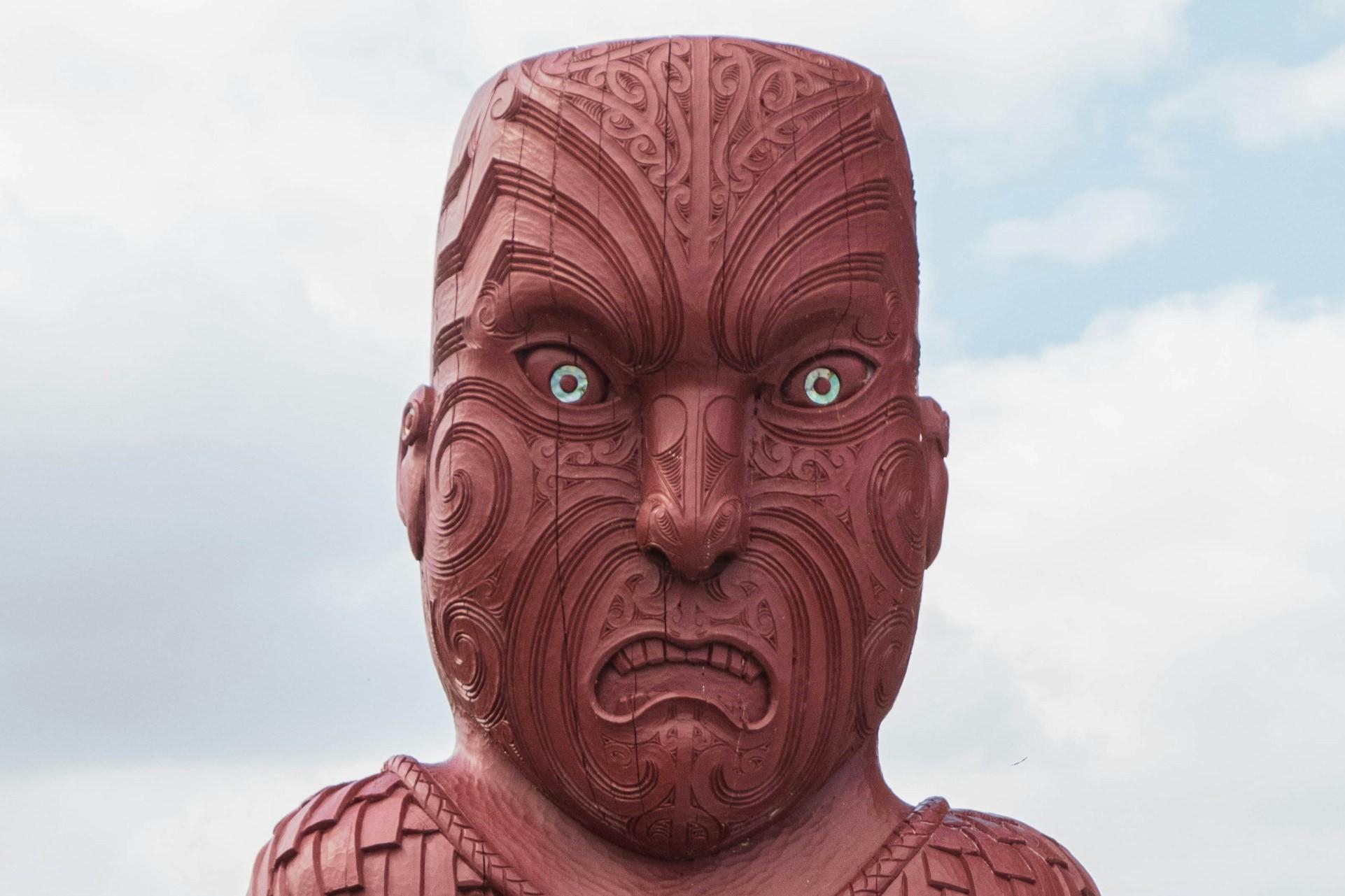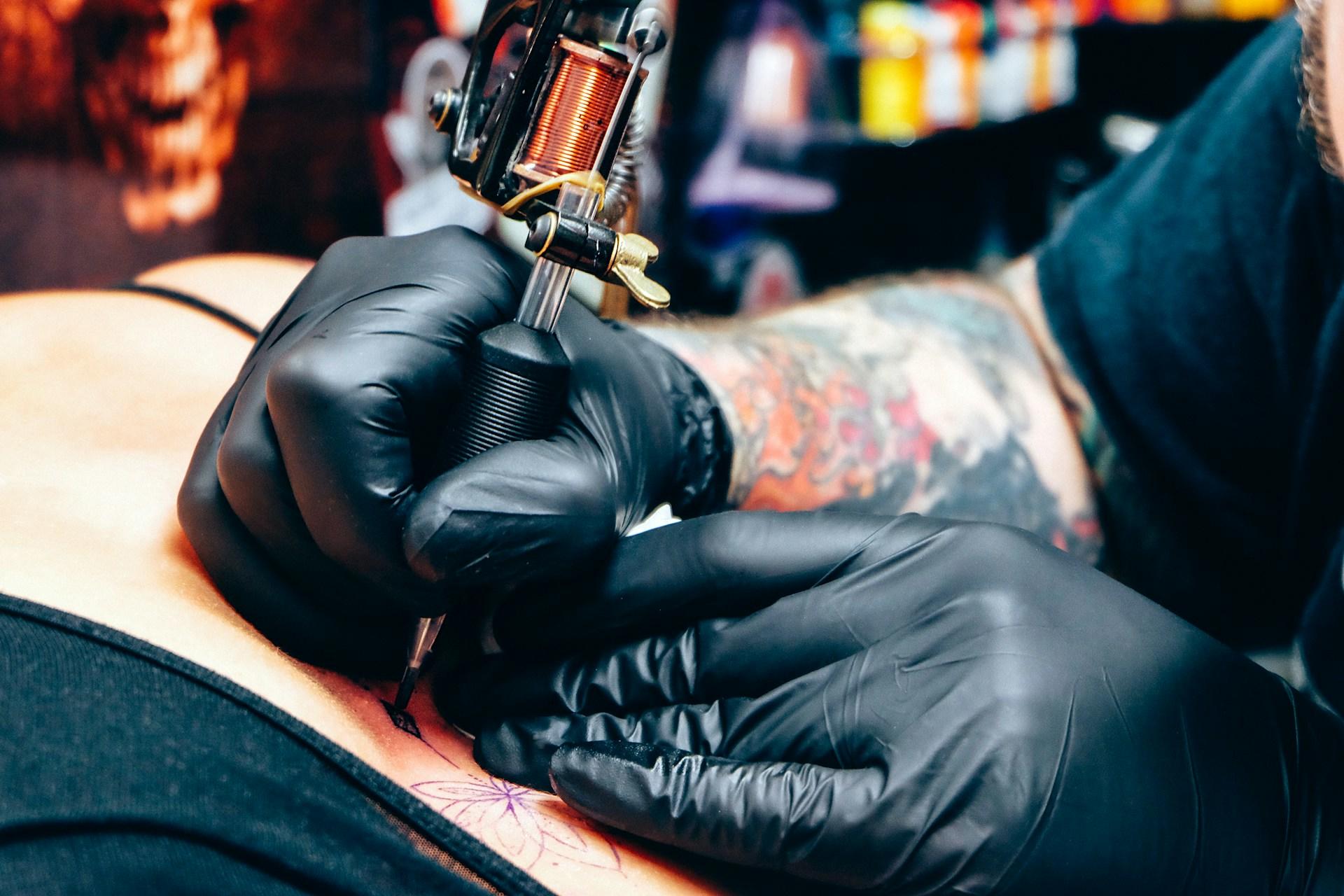Maori tattoo designs, known as tā moko in the Maori language (te reo Maori), are more than a simple aesthetic choice.
They are not just tattoos, but a unique expression of a person's identity, heritage, and life journey. These are not generic 'tribal tattoos' that seem to go through cycles of popularity but are instead deeply rooted in the cultural and spiritual traditions of the Maori people of New Zealand. The designs are unique to the wearer and often represent their whakapapa (genealogy), achievements, and social status.
They're an important and fascinating part of Maori culture and art. Let's explore the history of traditional Maori tattoo designs and their use in contemporary Maori culture, too!

The History and Cultural Background of Tā Moko
The history and background of tā moko, the traditional Maori form of tattooing, is full of symbolism, ritual, and cultural significance.
These are not just body decorations; they are a unique visual language that can tell stories of identity, genealogy, social status, and a person's life journey, distinct from other tattooing practices.
Such tattoos are rooted in the indigenous traditions of the Maori people of Aotearoa (New Zealand) and have shown remarkable resilience, surviving challenges from colonisation and cultural suppression.
Tā moko is a unique visual language, deeply personal to the wearer, representing genealogy, achievements, and social status.
The Origins of Tā Moko
Tā moko dates back to early Polynesian body marking and tattooing traditions. When the Maori ancestors arrived in New Zealand from their ancestral Polynesian homeland of Hawaiki, they brought their knowledge and body art techniques.

These approaches evolved over time into tā moko. While they share similarities with other Polynesian tattooing practices, there are distinctive differences between tā moko and tattooing in places like Samoa, Tonga, and the Marquesas Islands.
For example, many Polynesian tattoos puncture the skin with a tool dipped in ink. Tā moko uses a complex and painful process that uses chiselling and carving.
Not only did the approaches evolve, but so did the design. Tā moko differs from similar practices by using intricate designs that reflect distinctly Maori beliefs, values, and social structures. It's an integral part of Maori identity and a way to pass down history through visual storytelling.
Tā moko survived colonization and suppression, evolving from Polynesian traditions into a distinctly Maori practice with chiseling and carving techniques.
The Aesthetics of Maori Tattooing
The aesthetics of Maori tattooing, or tā moko, are instantly recognisable but rich in symbolism and artistry, combining traditional and modern elements to ensure they're as meaningful as striking. They often feature black lines and intricate patterns detailing a personal narrative representing genealogy, strength, and cultural identity.
It's common for these tattoos to feature symbols and patterns like the koru as well as natural elements like fish and turtles, connecting the wearer to nature and the ocean, which are central to Maori culture. Modern adaptations can include seamless patterns and sleeve-like designs that integrate traditional styles with contemporary aesthetics.
Visually, these are a combination of intricate patterns and bold lines to tell stories of growth, strength, and whakapapa (genealogy). The black ink is applied in deep carved grooves (more on that in a moment) and the designs are often found on the face, arm, forearm, shoulder, or even full sleeve.
Designs will include flowing lines, illustrations, and symbolic patterns that are visually cohesive and deeply meaningful to the wearer. These illustrations, worn as tā moko, turns a Maori person's body into a canvas representing their past and future.
Tā moko combines intricate patterns and bold lines to symbolize growth, strength, and connection to ancestors and nature.

The Tools and Techniques Used in Tā Moko
As we've alluded to, the tools and techniques used in tā moko differ from those of other tattooing practices around the world and even from those of related Polynesian tattooing practices.
Here are the specialised tools and techniques used:
- Uhi (Chisels): Instead of puncturing the skin with needles like many other types of tattooing, Maori tattooists use uhi (chisels) made from shark teeth, albatross bone, or sharpened stones. These chisels are dipped in natural pigments and hit with a small mallet to carve deep grooves into the skin.
- Pigments: The black pigment used in tā moko was traditionally made from burnt wood, kauri gum, and other organic substances. The pigment was stored in small containers and applied to the carved grooves, creating permanent dark patterns, often using traditional Maori symbols.
- The whole process of tā moko, from the use of chisels to the application of pigments, is a painful and ritualistic experience. Many see it as a rite of passage for Maori people, and simply enduring the act shows a person's bravery, strength, and commitment to their culture.

Symbolism and Meanings
Every tā moko is highly personalised, carrying meanings specific to each individual. Designs are never generic, as there's always something unique in every tā moko, complete with a personal meaning:
- Whakapapa (genealogy): Tā moko designs reflect a person's family lineage and tribal connections. These tattoos can tell stories of ancestors, relationships, heritage, myths and legends, and deeply important concepts in Maori cultures.
- Mana (prestige): Tā moko is a mark of mana, a person's honour, prestige, and social standing. Generally, the higher a person's rank within a tribe or community, the more elaborate their moko designs. Chiefs and warriors often bore the most elaborate designs.
- Achievements and Milestones: Specific patterns indicate personal achievements such as victories, rites of passage, and contributions to the tribe or community.
- Spiritual Connection: Tā moko was believed to connect the wearer with their tīpuna (ancestors) and the spiritual world with motifs symbolising protection, guidance, and balance.
Placement of Tā Moko and Gender Differences
The place of tā moko carries meaning; typically, there were gendered differences between men and women.
When men received moko on their faces, it usually denoted them as warriors of high-ranking individuals. Where exactly this was also had different meanings:
- Forehead (Ngakaipikirau): This denoted a man's rank or social status.
- Nose (Uirere): The person's hapū (sub-tribe) and their prestige.
- Chin and Jaw (Wairua): The wearer's ancestry and life path.

Tattoos on the thighs or rear usually represented strength, courage, or fertility.
The most common moko placement for women was on the chin and lips. These tattoos would symbolise beauty, identity, and a connection to their ancestry.
Women also had moko on their forearms and shoulders, indicating their achievements or social roles.
Colonisation and Cultural Supression
When European colonisers arrived in the 19th century, many Maori cultural practices, including tā moko, were suppressed.
Christian missionaries considered tā moko as a pagan practice. They discouraged it, while colonial policies often undermined any Maori traditions in favour of more Western customs and assimilation.
With the cultural stigma of tā moko forced upon Maori peoples, the practice declined, with many Maori discouraged or shamed for having any kind of traditional tattoo.
More recently, there has been a revival, with more Maori choosing to preserve their cultural identity through the practice of tā moko.
Many see it as a powerful way to reclaim Maori identity. Along with the Maori language (te reo Maori) and Maori art forms, they can embrace their heritage, pride, and connection to their ancestors.
Many tattoo artists use contemporary tattooing tools alongside traditional Maori approaches, making the whole process more accessible.
Tā moko has seen a resurgence as Maori reclaim their heritage, while kirituhi offers non-Maori a respectful way to engage with Maori-inspired designs.
The Importance of Cultural Respect
For non-Maori, kirituhi are Maori-inspired tattoos. These draw on the aesthetic elements of tā moko without the underlying genealogical, spiritual, and cultural meaning. Kirituhi literally means skin writing, and it's an art form where non-Maori people wear a tattoo done by Maori artists that's generally more respectful.
There's a lot of important cultural nuance here that we won't get into here, but the best way is to ask the Maori people and the moko artists offering them, as they'll explain much better what is appropriate, explain their culture, and let you know what isn't. Tey'll likely refuse to provide any kirituhi that borders on inappropriate.
With more people aware of tā moko, there's naturally been a greater interest in it. After all, aesthetically, these are wonderful works of art, which is why only talented moko artists will perform them.
However, as you've seen, tā moko isn't just body art. It's a sacred tradition that should be treated with cultural respect, sensitivity, and understanding, as it has a lot of meaning and significance.

Since tā moko is a form of storytelling and identity, it's not just a decorative choice for a person like certain tattoos may be for individuals. When a Maori wears tā moko, it carries ancestral narratives and cultural heritage.
Tā moko connects the wearer to ancestors and spiritual guardians, with each line, curve, and traditional Maori pattern having a greater message than just one of individual expression.
As always, the easiest way to understand tā moko and everything related to this cultural practice is to speak with people within the communities themselves.
You can consult Maori tattooists and collaborate and consent with them on designs if you're getting a tattoo or kirituhi (not tā moko). Of course, if you are Maori, you can get tā moko, as this is the Maori-on-Maori tattooing with the cultural significance we've been focusing on here.
If you're a tattoo artist inspired by the designs and graphical elements of tā moko, it's recommended that you ask permission, acknowledge and credit any artists that inspired you, and generally be respectful of the use, ensuring you understand the cultural significance of anything you are thinking about using.
The Difference Between Maori and Polynesian Tattoos
Originated in Aotearoa (New Zealand) with the Maori people.
Tā moko is specific to the Maori culture, serving as a visual language that represents personal identity, whakapapa (genealogy), and social status.
It's considered a sacred tradition that connects the wearer to ancestors and the spiritual world.
Rooted in the broader Polynesian culture, including regions like Samoa, Tonga, Hawaii, Tahiti, and the Marquesas.
Polynesian tattoos often reflect broader Polynesian values, such as respect for ancestors, connection to nature, and spiritual beliefs.
The designs vary between regions, with each culture having unique styles and symbols.
Avoiding Cultural Appropriation
Knowledge is key to avoiding cultural appropriation of these important practices. Understanding tā moko and what it all means will make cultural appropriation less likely.
Using tā moko for profit or personal gain without understanding, respect, or permission can be harmful and perpetuate stereotypes.
It would be best to avoid tā moko for purely aesthetic appeal, for example, getting a tā moko-style tattoo because you think it looks good.
Similarly, facial moko and certain designs are deeply sacred, so their designs shouldn't be used outside these contexts. Don't use tā moko for logos, fashion, etc.
Tā moko was suppressed so long that devaluing the practice for aesthetic or financial reasons is incredibly disrespectful.
















